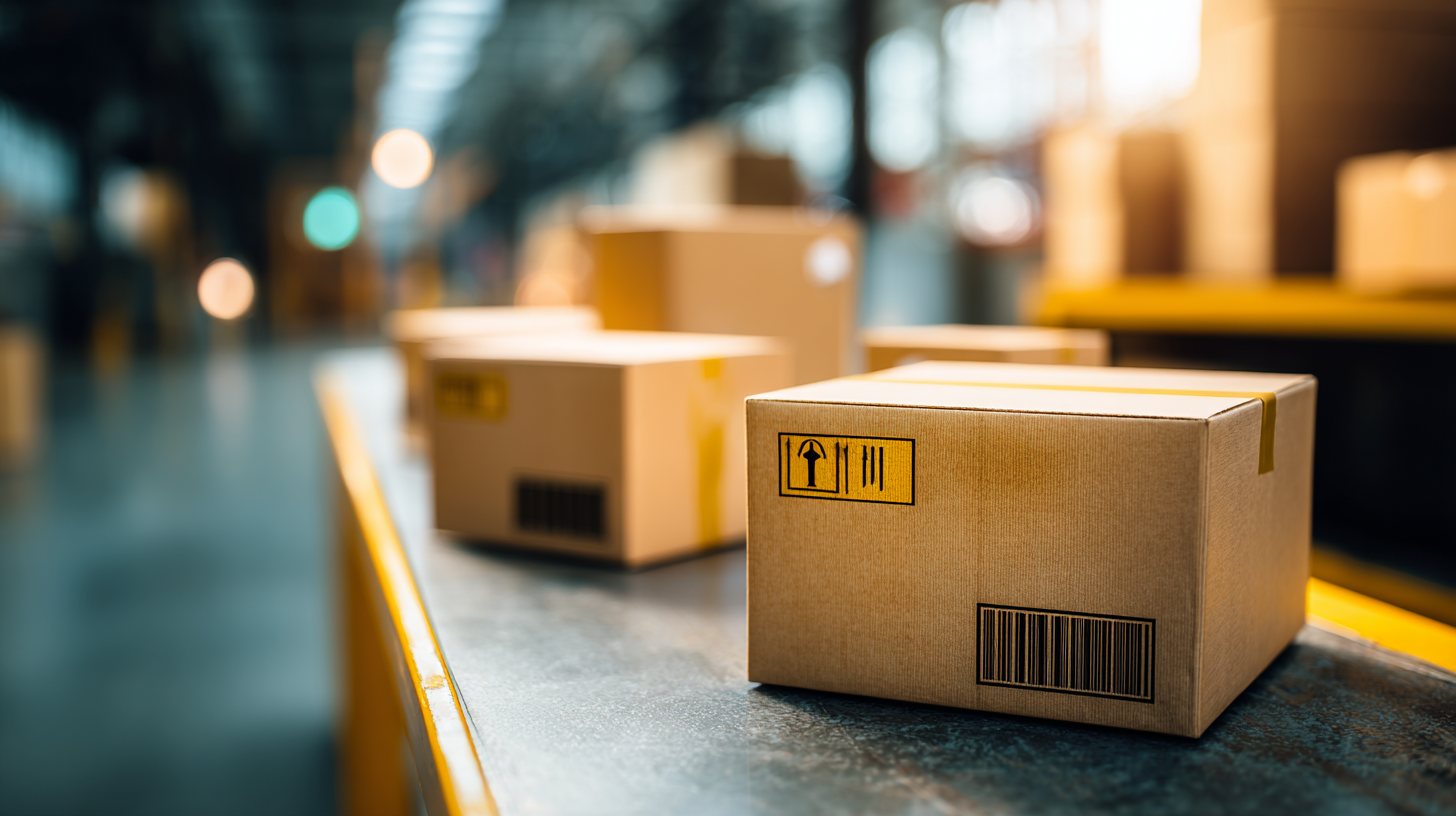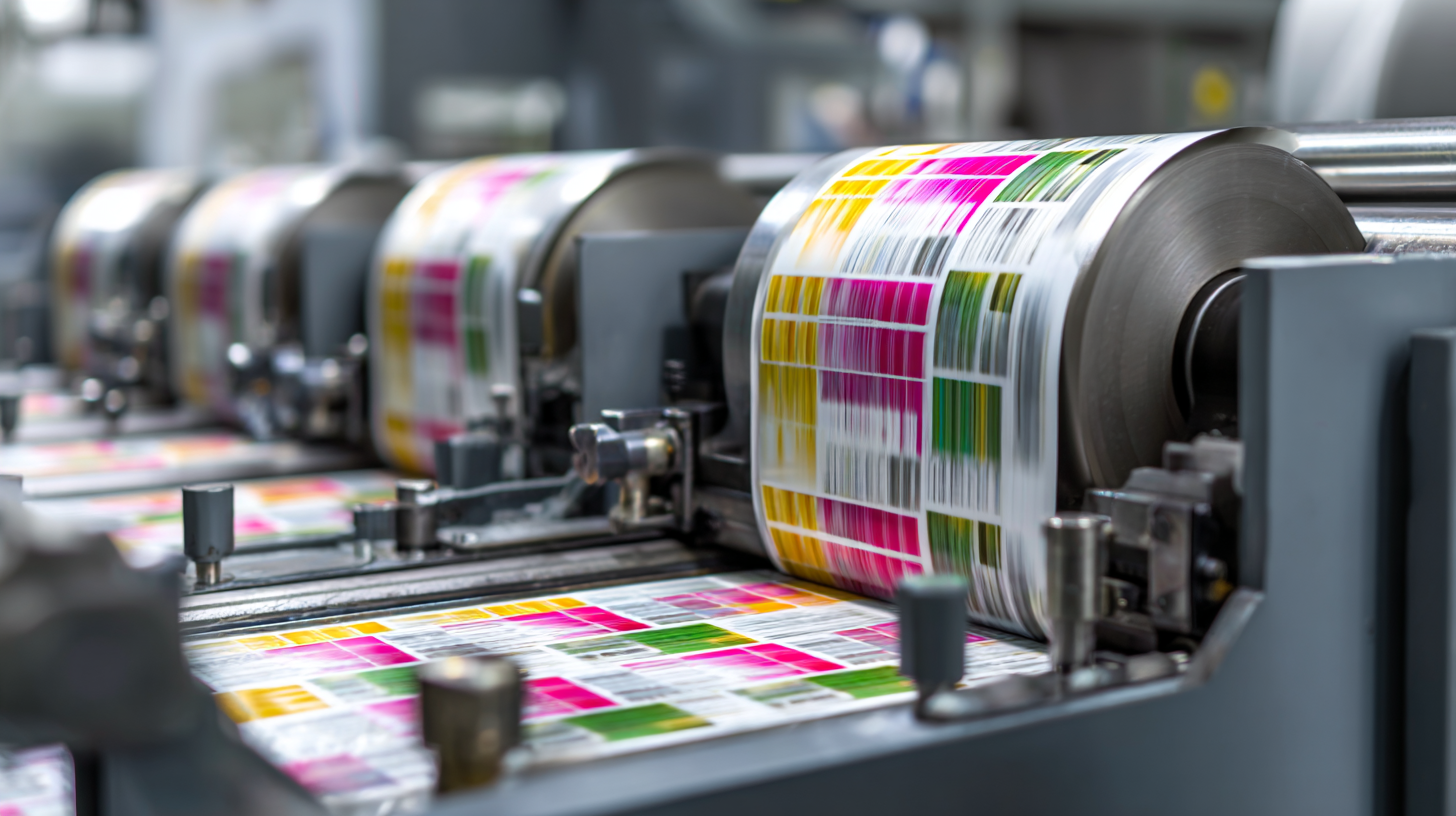Unlocking Industry 2025 Trends in Product Label Printing for Global Buyers
As we approach 2025, the landscape of Product Label Printing is poised for transformative changes that cater to the evolving demands of global consumers. According to a report by Smithers Pira, the global market for product labeling is projected to exceed $50 billion by 2026, driven largely by innovations in digital printing technologies and increased sustainability efforts. This surge is prompting buyers worldwide to seek new strategies and solutions that reflect the latest trends in consumer preferences, regulatory requirements, and environmental impact. Understanding these dynamics is crucial for industry stakeholders to unlock growth opportunities and enhance their product offerings. In this blog, we will explore meticulous strategies on how global buyers can navigate and capitalize on the emerging trends in Product Label Printing, ensuring their businesses remain competitive and relevant in a rapidly changing marketplace.

Emerging Technologies Shaping Product Label Printing for 2025
As the product label printing industry moves towards 2025, several emerging technologies are shaping its future, significantly improving efficiency and sustainability. Key drivers in this transformation include artificial intelligence (AI), the Internet of Things (IoT), blockchain, and robotics. AI enhances operational efficiency by optimizing printing processes, while IoT technologies offer real-time monitoring and connectivity, enabling smarter supply chain management. Blockchain is increasingly being integrated for traceability and transparency, addressing consumer demands for sustainable practices.
Reports indicate that the implementation of these technologies can lead to significant cost reductions and improved productivity. For instance, automation through robotics can streamline labor-intensive tasks, with projections showing a potential 40% increase in overall operational efficiency by 2025. Furthermore, sustainability is at the forefront, as companies adopt eco-friendly materials and digital printing techniques that minimize waste. The ongoing advancements in digital label presses highlight the industry's commitment to innovation, aiming for a more agile and environmentally responsible production ecosystem as we approach 2025.
Sustainability Trends in Label Printing: A Comparative Analysis
In recent years, sustainability has become a critical focus in the label printing industry, as consumers and businesses alike seek eco-friendly solutions. According to a report from Smithers Pira, the global market for sustainable labels is projected to reach $40 billion by 2025, driven by increasing regulations and a shift in consumer preferences towards environmentally responsible products. This comparative analysis of sustainability trends highlights the importance of using recyclable materials, reducing waste, and adopting energy-efficient practices in label production.
One effective way companies can enhance their sustainability efforts in label printing is by opting for water-based inks and biodegradable substrates. These materials not only reduce the environmental impact but also resonate with eco-conscious consumers. Furthermore, implementing a closed-loop recycling process can significantly minimize waste and resource consumption—data from the European Federation of Corrugated Board Manufacturers indicates that using recycled materials can provide up to a 30% reduction in carbon emissions during manufacturing.
For brands looking to stay competitive, conducting a thorough assessment of supply chains to identify sustainable suppliers is key. Establishing partnerships with eco-friendly vendors can facilitate an effective transition towards greener practices. Additionally, adopting smart labeling technologies, such as QR codes for product information, can enhance consumer engagement while minimizing paper usage.
Unlocking Industry 2025 Trends in Product Label Printing for Global Buyers - Sustainability Trends in Label Printing: A Comparative Analysis
| Sustainability Factor | Percentage Adoption (%) | Impact on Waste Reduction (%) | Cost Increase (%) | Consumer Preference (%) |
|---|---|---|---|---|
| Biodegradable Materials | 45 | 30 | 15 | 55 |
| Recyclable Materials | 60 | 40 | 10 | 70 |
| Digital Printing | 50 | 25 | 20 | 65 |
| Local Sourcing | 35 | 20 | 25 | 60 |
| Eco-Friendly Inks | 55 | 35 | 5 | 75 |
Cost Efficiency: Comparing Traditional vs. Digital Label Printing Methods
In the ever-evolving landscape of product label printing, cost efficiency remains a pivotal factor for businesses globally. As companies weigh their options between traditional and digital printing methods, significant differences emerge that can greatly influence both budget and output quality. Traditional printing methods, while often seen as more economical for large runs, can incur high set-up costs and extended lead times.
In contrast, digital printing offers flexibility and speed, with the added advantage of shorter production runs at competitive prices.
The digital printing market is projected to experience robust growth, with expectations to rise from $30.55 billion in 2024 to $49.49 billion by 2033. This shift highlights not only the increasing demand for customizable and rapid solutions but also the evolving technology that supports diverse ink types, each catering to specific needs—be it aqueous, solvent, or UV-cured inks.
As the industry anticipates advancements showcased at events like Labelexpo Americas 2024, businesses are encouraged to embrace digital solutions, ensuring they stay ahead of the curve in both efficiency and innovation.

Customization and Personalization: Meeting Diverse Buyer Needs
In today's rapidly evolving market, customization and personalization have become pivotal in product label printing. As global buyers increasingly seek unique solutions that cater to their specific needs, businesses must adapt their strategies to stay competitive. Custom labels not only enhance brand identity but also allow companies to connect with consumers on a personal level, ultimately driving customer loyalty and satisfaction.
By leveraging advanced printing technologies and innovative design options, brands can now offer tailored labeling solutions that resonate with diverse buyer preferences. Whether it's bespoke designs for luxury products or eco-friendly materials for sustainability-minded consumers, the ability to personalize labels can significantly impact a product's marketability. This trend underscores the importance of understanding consumer behavior and utilizing data analytics to inform label design decisions that align with buyer expectations and trends in the industry.
Unlocking Industry 2025 Trends in Product Label Printing for Global Buyers
This chart illustrates the trends in customization and personalization within the product label printing industry, highlighting the growth in diverse buyer needs from 2023 to 2025.
Global Market Insights: Navigating Label Printing Challenges and Opportunities
The label printing industry is experiencing a transformation as we approach 2025, with significant trends emerging that global buyers should be aware of. As the demand for customized packaging grows, businesses are seeking innovative solutions to enhance brand visibility while maintaining cost efficiency. This evolution presents both challenges and opportunities, particularly in adapting to sustainability requirements and consumer preferences for eco-friendly materials.
To navigate the complexities of label printing, buyers should focus on integrating advanced technologies into their production processes. Implementing digital printing techniques can improve the speed and flexibility of label creation, enabling businesses to respond swiftly to market changes. Additionally, investing in automation can streamline workflows, reduce waste, and ultimately lower operational costs.

Tip 2: Collaborate with suppliers who prioritize sustainable practices, ensuring that your label printing aligns with environmental values. This not only appeals to eco-conscious consumers but also enhances your brand reputation in the long term.
By addressing these key areas, global buyers can effectively navigate the label printing landscape and capitalize on the opportunities that lie ahead.
